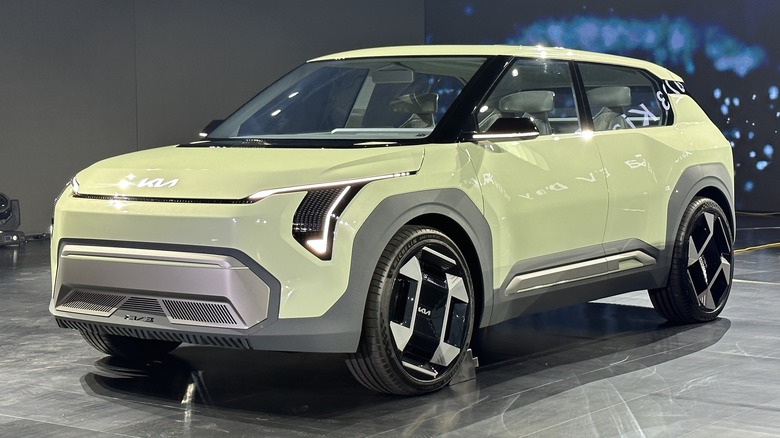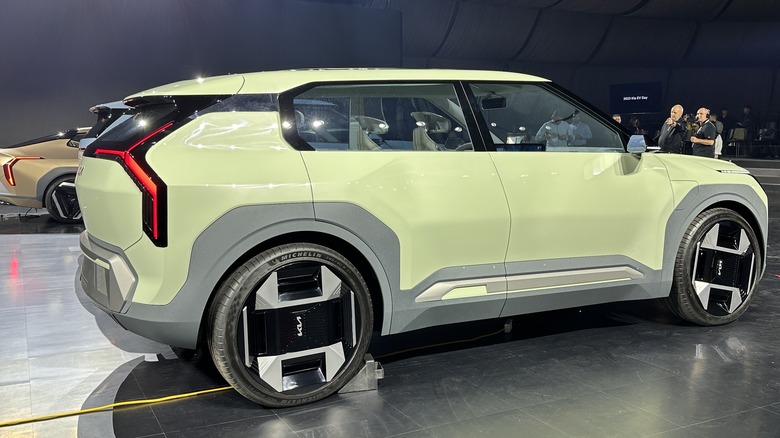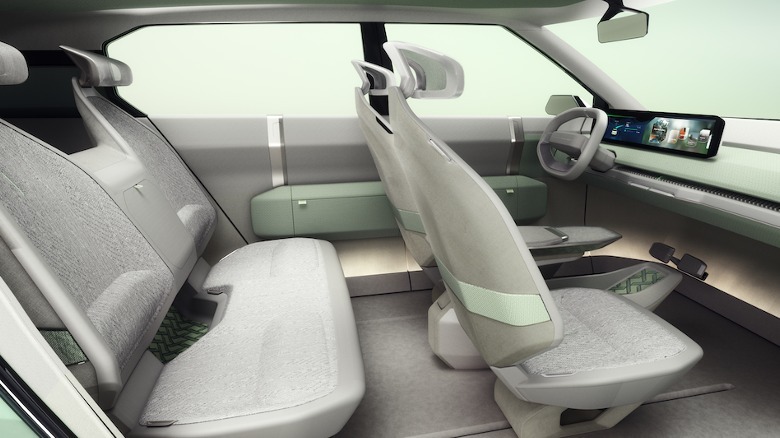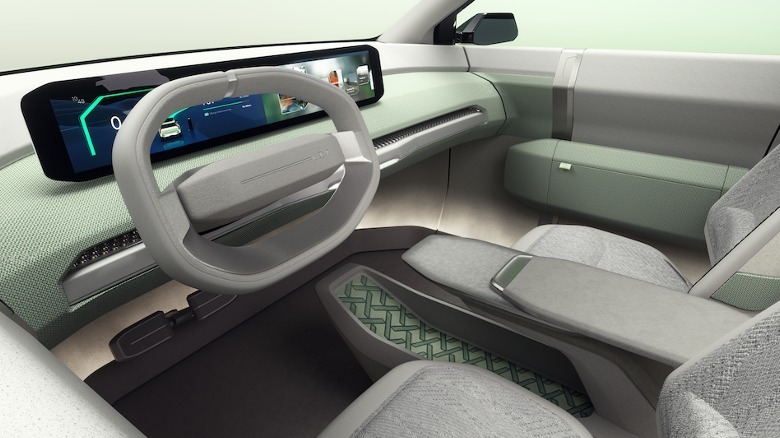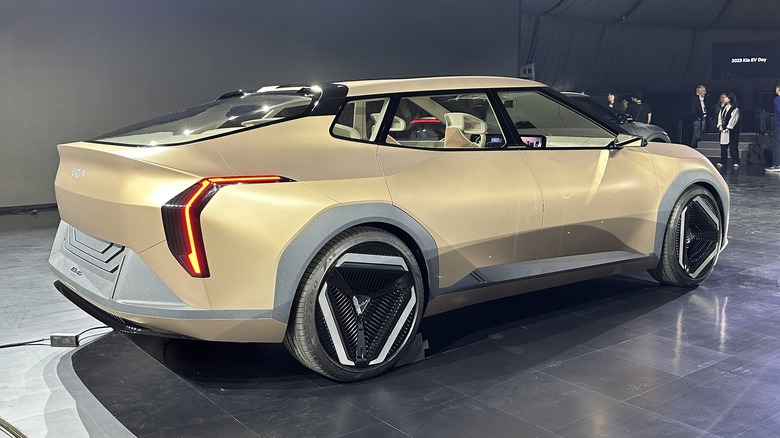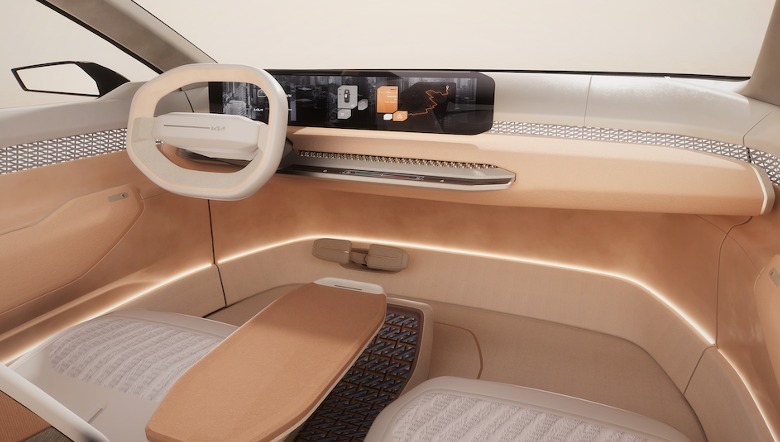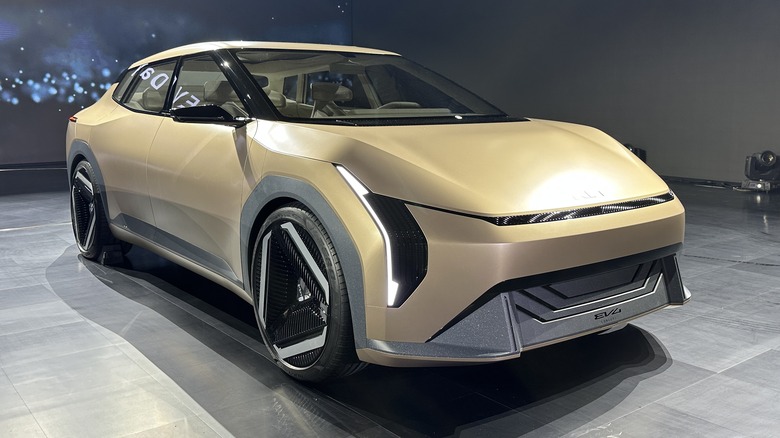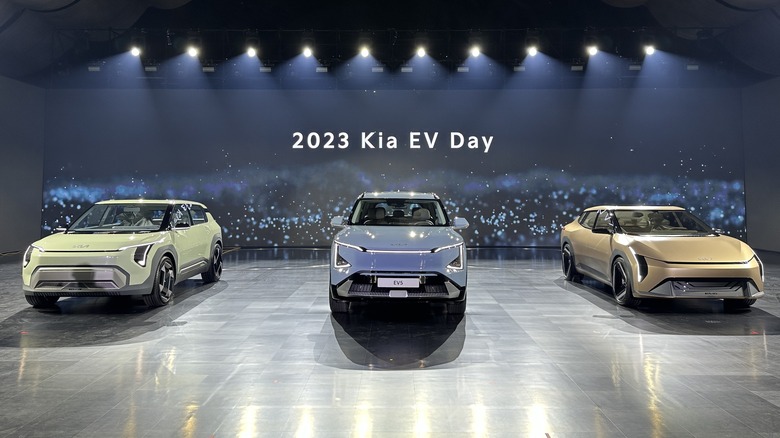Kia EV3 & EV4 Concepts Are Headed To Production, And Cost Could Be Their Big Advantage
Kia hopes to sell more than 1 million electric cars annually around the world by 2026. And since that's, you know, just three years away, the company has big plans to bolster its current electric vehicle portfolio with a host of new models, three of which we saw in South Korea this week at the automaker's EV Day event.
In addition to the 2025 EV5 we've seen already that'll arrive first, Kia showed smaller EV3 and EV4 concepts. But don't worry, these cars won't be concepts for long. Both are confirmed for production — though not necessarily confirmed for US consumption — and we should see the road-going versions in the not-too-distant future. That's definitely a good thing, as there's a lot to get excited about here.
Kia EV3: Butch and boxy, but oh so cute
The EV3 has small EVs like the Volvo EX30 squarely in its sights. Looking like a scaled-down version of Kia's flagship EV9, the EV3 has a subcompact footprint with lots of passenger space, not to mention a few rad interior flourishes that we really, really hope make it to production.
For starters, there's the flip-up rear bench – something that reminds us of the Magic Seats in the old Honda Fit. This would allow buyers to load tall items into the back of the EV3, and Kia says it's looking into the possibility of fitting a vehicle-to-load charging port inside the car, so you could theoretically load up an e-bike and charge it while you drive.
Up front, the EV3 has a slide-out panel for climate controls that Kia says probably won't come to production, but the sliding center console that converts into a table is a lot more realistic. The concept's rear-hinged coach doors also aren't likely to become a reality, but Kia says the EV3's overall design is pretty close to final. We hope those awesome four-spoke blocky wheels find their way to production, too.
Kia EV4: A new take on the sedan form
The EV4 is much more striking than the EV3 in person, largely because of its overall shape. It's not quite a sedan and not quite a hatchback, but a liftback with a long rear deck that Kia says is a nod to aerodynamically friendly longtail-style sports cars.
Honestly, in person, the EV4's proportions are a little weird, especially with that massive rear overhang. But it's super cool to see Kia thinking outside the box — literally — when it comes to future car design. A vehicle like the EV4 could certainly appeal to buyers who don't want another SUV like all their friends and neighbors. And with a roof-hinged hatch, the EV4 should still be pretty functional.
Inside, the EV4 will have a lot of the same accouterments as the EV3, including that sliding center console and a focus on recycled and sustainable materials. We love the three-dimensional air vents, too, with movable and backlit pieces that direct airflow from the climate control system. Oh, and like the EV3, we hope the EV4's wheels are production-intent, as well.
Both EVs share common architecture
Kia says all of its new EVs will ride on the scalable E-GMP platform that underpins the current EV6 and EV9. However, unlike those cars, the EV3 and EV4 won't likely take advantage of 800-volt architecture, instead relying on less-powerful 400-volt technology. The good news? A 400-volt platform reduces cost. The bad news? A 400-volt platform also reduces charging speeds.
Kia won't confirm any powertrain details just yet, but we fully expect the EV3 and EV4 to be offered with both single- and dual-motor configurations. There might even be a higher-performance EV4 GT in the works. Fingers crossed.
How much will they cost?
This piece of information is also unclear, but as part of Kia's larger EV plan, the company wants to offer vehicles that run the gamut between $30,000 and $80,000. It stands to reason the EV3 would likely play towards the lower end of that spectrum, while the EV4 could take a slightly more premium approach, hitting in the $40,000 range. Kia's other new EV, the EV5, could theoretically overlap the EV4 in terms of price, since the two vehicles are geared toward different buyers and have roughly the same footprint.
Of course, the big hurdle will be seeing if Kia can localize production of these models in the US so buyers can take full advantage of available tax credits. Besides, Kia has yet to officially confirm whether or not the production-spec EV3 or EV4 will be sold Stateside. But if the company wants to move a million EVs by 2026, we don't see why it'd overlook one of its largest markets.
